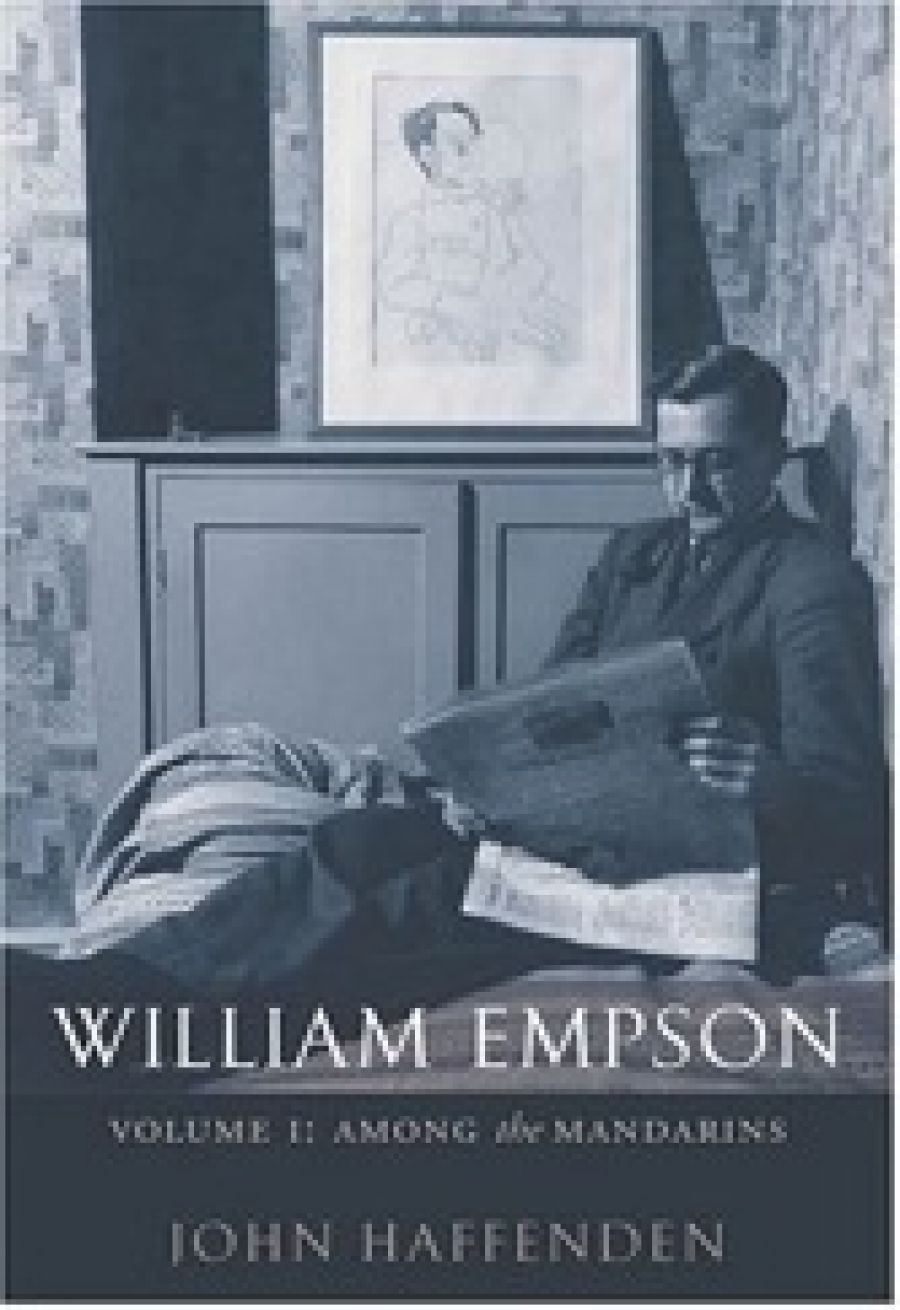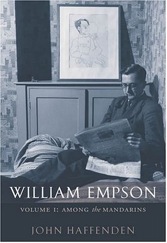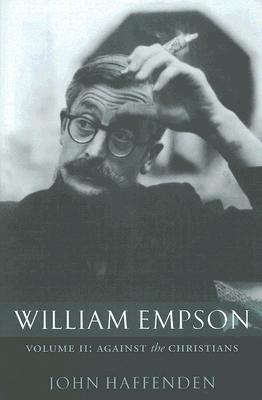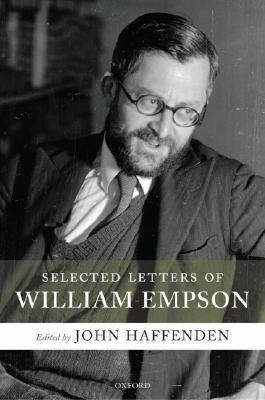
- Free Article: No
- Contents Category: Profile
- Custom Article Title: ‘Slowly the Poison’ by Ian Donaldson
- Review Article: No
- Article Title: Slowly the Poison
- Online Only: No
- Custom Highlight Text:
The lives of scholars and critics, however distinguished they may be, however resourceful their narrators, do not always make for compelling reading, let alone for an account that runs so readably to the phenomenal length of John Haffenden’s absorbing two-volume biography of the English poet and critic, William Empson. Devoted as they are to things of the mind, most academics do not, after all, generally do very much that is likely to command the attention of a wider public, or make for sparkling story. ‘A quiet life’ – the phrase in which Lord David Cecil summed up the career of the Cambridge don and poet Thomas Gray (whose one big adventure was to move, when teased insufferably by his colleagues at one Cambridge college, to the fellowship of another Cambridge college immediately over the road) – seems almost to epitomise this entire genre.
- Book 1 Title: William Empson
- Book 1 Subtitle: Among the mandarins
- Book 1 Biblio: Oxford University Press, $105 hb, 714 pp
- Book 1 Cover Small (400 x 600):

- Book 1 Cover (800 x 1200):

- Book 2 Title: William Empson
- Book 2 Subtitle: Against the Christians
- Book 2 Biblio: Oxford University Press, $105 hb, 819 pp
- Book 2 Cover Small (400 x 600):

- Book 2 Cover (800 x 1200):

- Book 3 Title: Selected Letters of William Empson
- Book 3 Biblio: Oxford University Press, $140 hb, 788 pp
- Book 3 Cover Small (400 x 600):

- Book 3 Cover (800 x 1200):

Yet the life of William Empson was for from quiet, and his behaviour, like his ideas, continually defied convention and expectation. The most gentle and genial of men, Empson embraced risk, both socially and intellectually, almost as matter of principle. Quarrelling with the traditional assumptions of the society into which one had been born, as Empson saw it, was the essential Darwinian route to mental and social advancement. Writers such as John Donne, who, in Empson’s view, pushed constantly against the limits of acceptable opinion of his time, were of greater interest to him than those such as Thomas Traherne, who appeared to live contentedly within them. The greatest artists and thinkers, moreover, were often apt (so Empson believed) to quarrel profoundly with themselves. Art at its best often therefore expressed some unresolved and unresolvable conflict in the creator or the creative process, challenging not merely received opinion, but the very premises from which the work seemingly originated. In poetry, this inner quarrel expressed itself characteristically in moments of verbal ambiguity, a concept of which Empson was to become the supreme expositor. In life it might show itself in other ways: through restlessness or eccentricity or humour, and in the capacity to surprise, qualities that Empson certainly possessed in abundance. Human life, he once wrote,
is so much a matter of juggling with contradictory impulses (Christian-worldly, sociable-independent, and such-like), that one is accustomed to thinking people are probably sensible if they follow first one, then the other, of two such courses; any inconsistency that it seems possible to act upon shows that they are in possession of the right number of principles, and have a fair title to humanity.
As a prodigiously gifted young man, trained first in mathematics and later in literature, omnivorously curious about every new kind of scientific and humanistic enquiry of the late 1920s, Empson had his own early Cambridge adventure that catapulted him not merely (like Gray) out of his college but, for several decades, entirely beyond the sheltering walls of English academic life. Gossip among college servants shortly after his election to a ByeFellowship at Magdalene in 1929, that contraceptives were to be found amongst his personal possessions, led to his immediate expulsion from the college. The Master was said to be unsure of the precise application of these ‘engines of love’ (nowadays readily available from vending machines in every Cambridge college), but the transgression of which they were the presumed evidence was viewed with the utmost severity. Debarred from further residence in Cambridge, Empson shifted to London, where he met occasionally with T.S. Eliot, Virginia Woolf and other members of the Bloomsbury circle, and worked on the ambitious book he had begun to write during his undergraduate days in the form of weekly essays for his College supervisor, I.A. Richards. Seven Types of Ambiguity, published in 1930 when Empson was only twenty-four, sealed his early reputation for intellectual brilliance. It was ‘the most imaginative account of reading ever printed’, John Crowe Ransom was later to declare, ‘and Empson the closest and most resourceful reader that poetry has yet publicly had'.
Yet despite the book’s immediate success, Empson remained financially insecure and academically unemployable, so it seemed, within Britain. In the early 1930s, he decided to accept a three-year university appointment in Tokyo. He arrived in Japan at a singularly unpropitious moment of rising nationalist sentiment. The politeness, passivity and dogged patriotism of his students surprised him, as did their frequent failure even to understand what he was saying. To help them along, he took to writing constantly on the blackboard as he talked, wiping the board clear again as he went on, and covering himself liberally in chalk in the process. ‘A year of talking cleverly at the blank air – throwing away “brilliance” – has purged a lot of nonsense out of my mind’, he reported later to Richards with stoic cheerfulness, yet the experience must nevertheless have been quite painful and dispiriting. ‘Slowly the poison the whole blood stream fills’, so one of his best-known poems from this decade (‘Missing Dates’) begins: ‘It is not the effort nor the failure tires. / The waste remains, the waste remains and kills.’
‘Waste’ is a notion of which he must have had more than a theoretical understanding in this trying period of his life.
To a person of such resilience and such sharply observant powers, no experience, however tedious, goes entirely to waste; the very phenomenon of waste may indeed itself become a focus of analytical attention. A work that Empson was studying closely with one of his Japanese students at this time happened, curiously enough, to be the ‘Elegy Written in a Country Churchyard’, by the Cambridge poet and quiet liver, Thomas Gray. Gray’s famous lines on the subject of unfulfilled talent were to prompt some revealing reflections from Empson at the outset of the book he was then beginning to draft, Some Versions of Pastoral:
Full many a gem of purest ray serene
The dark, unfathomed caves of ocean bear;
Full many a flower is born to blush unseen
And waste its sweetness on the desert air.
Here is Empson 's comment:
What this means, as the context makes clear, is that eighteenth-century England had no scholarship system or carrière ouverte aux talents. This is stated as pathetic, but the reader is put into a mood in which one would not try to alter it ... By comparing the social arrangement to Nature he makes it seem inevitable, which it was not, and gives it a dignity which was undeserved. Furthermore, a gem does not mind being in a cave and a flower prefers not to be picked; we feel that the man is like the flower, as short-lived, natural, and valuable, and this tricks us into feeling that he is better off without opportunities. The sexual suggestion of blush brings in the Christian idea that virginity is good in itself, and so that any renunciation is good; this may trick us into feeling it is lucky for the poor man that society keeps him unspotted from the World. The tone of melancholy claims that the poet understands the considerations opposed to aristocracy, though he judges against them; the truism of the reflections in the churchyard, the universality and impersonality this gives to the style, claim as if by comparison that we ought to accept the injustice of society as we do the inevitability of death.
Empson’s critique of Gray’s ‘Elegy’ may well have been sharpened by the distaste he felt for the passivity of the Japanese students he was teaching at the time, and by their unquestioning tolerance of the existing order of things. There might nevertheless have been some resonance in the poem that spoke to his own immediate situation in Tokyo. ‘Talking cleverly at the blank air’ and wasting one’s sweetness on the desert air amount, after all, to much the same thing. After the passage just quoted, Empson draws back for a more thoughtful assessment of Gray’s lines:
And yet what is said is one of the permanent truths; it is only in degree that any improvement of society could prevent wastage of human powers; the waste even in a fortunate life, the isolation even in a life rich in intimacy, cannot but be felt deeply, and is the central feeling of tragedy.
‘The waste even in a fortunate life’ is a phrase that might well be applied without much adjustment to Empson’s entire career.
After returning to London for a time, Empson decided to move east once more, and in 1937 accepted an appointment at the National Peking University. He arrived in China at the very start of the Sino-Japanese War, travelling to his new posting, somewhat uneasily, in a Japanese troop train. Peking was already an occupied city, and the universities were soon to become a particular target of attack. Empson promptly joined the evacuation of Chinese intellectuals from the city, heading for the temporary university-in-exile that had been established at a monastic site on a sacred mountain at Nan-Yueh in Hunan province. Here there were scarcely any books to teach from, but Empson impressed his students with his ability to assemble a workable body of classroom texts almost entirely from memory. Later, as the Japanese troops moved closer, the university shifted to other temporary sites further south, first at Mengtzu and later in Kunming. He lived adventurously in conditions of considerable discomfort: sleeping for a time (for want of a bed) on a blackboard laid out on trestles, and eating unfamiliar food. On one occasion, he was accosted and robbed by bandits outside Mengtzu, an episode he later recounted with ruefel amusement. On another, he journeyed ninety miles on a mule across south-west China to visit the trading town of Li-Chiang. Throughout these eventful times, he somehow contrived to work imperturbably on, drafting, amongst other things, the essays that would eventually become The Structure of Complex Words (1951) and an anthropological fantasy novel entitled The Royal Beasts (1986).
Empson was to visit China again during an equally exciting period (1947-52), this time in the company of his remarkable wife, Hetta, and their two sons, Mogador and Jacob. Many of Empson’s early students at the National Peking University were already secretly pledged to the Communist Party, then poised to take over power in the country, but he urged them to think for themselves, and wrote boldly on the blackboard, ‘If you believe everything you read you are much worse off than if you were unable to read at all’, and ‘Unless you learn to think for yourself your whole education is only a means of making you more purblind than if you had been left at home’. As the city came under bombardment, he focused on literary matters, drafting his combative essay on ‘Donne and the Rhetorical Tradition’. During the ensuing siege of the city, he crossed military lines to deliver his weekly lecture on Macbeth at a nearby university at Tsinghua, ‘but the boys did not want to be lectured to’, and his journey attracted the immediate notice of Communist guards. ‘I was greatly struck by the beautiful evangelical feelings of the troops who captured me, all consciously and confidently redeeming and redeemed,’ he later wrote, ‘and I admired the feelings of many other Chinese during the following two years.’ Such experiences would remain powerfully with him for the rest of his working life.
William Empson’s career coincided more or less exactly with what may be seen in retrospect as the heyday of English literary studies. That his own highly original (if occasionally wayward) writings were of crucial value to the establishment and credibility of this new discipline is generally recognised, but his precise place within its formation has often been misunderstood.
The Cambridge Faculty of English, established in 1919, was still a quite recent creation when Empson arrived at the university as a young undergraduate in 1925. The very fluidity of the evolving discipline at this time, its seemingly limitless possibilities for further development, must have been one of its chief attractions for Empson, luring him away from his first love, mathematics. Throughout his student days, as in later life, Empson was especially drawn to those whose work disregarded conventional disciplinary boundaries: figures such as Jacob Bronowski, who believed that ‘doing science was as natural as breathing or writing poetry)’, and J.B.S. Haldane, whom Empson described as ‘an all-round learned man, a scientist who as an undergraduate had done well at Great,. and as well as this classical and philosophical education was always liable to quote from Hindu or Icelandic epics or what not’. Empson’s literary supervisor and lifelong mentor at Magdalene I.A. Richards, had similar all-round aspirations and curiosities. Author of Science and Poetry (1926) and a dominating, though modest, intellectual presence in the faculty, Richards approached the study of literature with an awareness of recent work in the fields of psychology, linguistics, history, education, philosophy and scientific method. His weekly lectures to packed classes were astringent, bracing and profoundly exciting. As a field of study, literature seemed at that moment to lie at the very centre of humanistic enquiry, offering a promise that no other discipline, not even philosophy, could match. Empson astutely noted as much at the time, while reflecting on the closing tautology of Wittgenstein [in the Tractatus Logico-Philosophicus]; ‘Whereof one cannot speak, thereof one must remain silent.’ The detachment of that phrase from its context is the weakness of our generation. Could not Romeo be written? Were the Songs and Sonets what can not be said? What philosophy cannot state, art lays open. But philosophy has only just found out that it cannot state, all that we have no art to lay open.
Empson seems to have written those remarkable words in 1926, when he was all of twenty years old. A few months later, he would enrol as a student of English literature at Cambridge, and as a pupil of I.A. Richards.
Empson’s name in later years was often associated with the formalist school of reading known as the New Criticism. But Empson always firmly measured his distance from the New Critics, with their narrow concentration upon ‘words on the page’. He approached the study of literature with wider and more eager curiosities. W.K. Wimsatt and Monroe Beardsley’s famous essay on ‘the intentional fallacy’ he regarded with derision, arguing fiercely and unfashionably that literature must always be understood in relation to the life of the author and to the historical circumstances in which it had been written. Lecturing at Kenyon College in the summer of 1948 on ‘The Relevance of Verbal Analysis in Criticism, he startled his listeners by asserting the prior importance of politics, implying, as one member of his audience later recalled, ‘that perhaps no literary criticism was very important. in the same sense that the war in China or the suffering of individuals is important. And, for a moment, all the literary people forgot that they were literary.’ In a lecture on ambiguity in criticism delivered at Iowa University the same summer, Empson declared ‘how brave the Chinese students were under the secret police supported by the Americans and how it was a lesson for us that literary criticism must not be too footling’. At Indiana University in 1954, having been obliged by the United States Embassy to sign a solemn oath ‘to support the institutions and policies of the United States during the period of my sojourn within the State of Indiana’, he turned up to lecture dressed provocatively in a Chinese communist suit.
Literary criticism for Empson was inevitably associated not only with politics but also with questions of belief. The most dazzling passages of analysis in Seven Types of Ambiguity focus not just on moments of linguistic uncertainty but on what those moments in turn reveal about the larger view of the world that the works in question might seem to be advancing. In his famous reading of Hopkins’s ‘The Wind hover’, he detects a sudden, vertiginous glimpse of religious doubt within an outwardly orthodox and celebratory poem.
Brute beauty and valour and act, oh, air, pride, plume, here
Buckle! AND the fire that breaks from thee then, a billion
Times told lovelier, more dangerous, O my chevalier!
‘Buckle’, Empson remarked, ‘admits of two tenses and two meanings; “they do buckle here”, or “come, and buckle yourself here”; buckle like a military belt, for the discipline of heroic action, and buckle like a bicycle wheel, “make useless, distorted, and incapable of its natural motion”.’ This radical ambiguity, along with others in the poem, seemed to Empson to betray a deeper doubt within Hopkins’s own mind as to whether he had been crippled or primed for action by his severe Jesuit training. ‘Was ever grief like mine?’, the insistent refrain in George Herbert’s poem ‘The Sacrifice’, might likewise – so Empson ingeniously maintained – be viewed either as words uttered presently by Christ on the Cross or as those uttered subsequently by his tormentors, now suffering eternal punishment. The poem might therefore be read either as pious lamentation or as a rather nasty threat (‘I may be suffering now, but I’ll certainly get you later’). In Milton’s God (1961), he applied this method of reading energetically to Paradise Lost (1667), a poem he admired for its rhetorical energy, but deplored for the pernicious doctrine which he believed it embodied.
Throughout the latter part of his writing life, Empson battled constantly against the neo-Christians, as he termed them, who were piously content to unfold eternal truths in the poems they read, or sought to explain any oddity in a literary work simply by reference to ‘convention’. His later writings were no less ingenious than his early ones, but the light touch of his youth was not always evident, and the anti-Christian polemic threatened at times to become repetitive. Fondly admired for his robust intelligence and sense of mischief by younger critics such as Christopher Ricks, Empson became none the less disenchanted with what mainstream ‘Eng. Lit.’ studies had turned out to be, and ever more isolated from critical fashion. Theory held no charms for him. He expressed impatience with the theorist he called, with studied forgetfulness, ‘Nerrida’, and for concepts of ‘indeterminacy’ and ‘undecidability’, insisting that the purpose of criticism was to establish meaning, not to abandon it.
William Empson was a critic of quite remarkable powers, not merely of cleverness, ingenuity, and mental agility, but also, when occasion demanded, paradoxical though this may seem, of almost Johnsonian practicality, directness and common sense. Literature for him was a part – the best part, perhaps, but a part nonetheless – of a wider intellectual world about which he was always eager to learn more. He found it inconceivable that historical and biographical enquiry should ever be thought of small value to the literary critic. His own late volume, published in the year of his death, was called, in defiance of fashion, Using Biography (1984). Though he did not live to read John Haffenden’s great biography, and might quizzically have asked if his life was really worth the massive and microscopic attention that his biographer has bestowed upon it, he did approve and assist the undertaking in its initial stages, and would surely have enjoyed – and been amazed at – the finished product, and the superlative accompanying edition of his letters.
Haffenden’s sheer zeal and resourcefulness as a biographer are often astounding. Across Japan, China, Britain and the United States he has hunted down former students, colleagues and friends of Empson’s in impressive numbers, extracted their reminiscences, and examined, where he can, their diaries and lecture notes, too. He can tell us the names of the Empsons’ cooks and amahs during their time in Peking in 1947, and what they all looked like. He has unearthed a letter about The Royal Beasts that Empson wrote from China, but failed to post, to Solly Zuckerman, around 1937, and has delivered it belatedly himself to Lord Zuckerman, as he now is, and received his answer. He has identified the particular painting by Gauguin that Empson is likely to have inspected on a visit to the Moscow Museum of Modern Art in the same year. He has studied the marginal comments in Ivor Richards’s personal copy of The Structure of Complex Words. No stone or pebble, however slight, is left unturned. In An Appetite for Poetry (1989), Frank Kermode describes a ‘very bad idea’ that Bernard Miles had in 1972 for Kermode and Empson to collaborate on a stage piece about John Donne that would then be presented by actors at the Mermaid Theatre. ‘The piece was hardly a success.’ Kermode remarks drily, ‘and I am glad to think the Empson scholars are unlikely to trace that manuscript.’ Haffenden quotes this remark, and quietly reports in an endnote where the manuscript is now to be found.
Yet Haffenden’s narrative is driven along with such gusto, such alert intelligence, such obvious pleasure in the task, that no one could reasonably grumble at the story’s inordinate length. It is a virtuoso feat of scholarship; a telling demonstration of what biography, at its finest, can actually achieve.


Comments powered by CComment